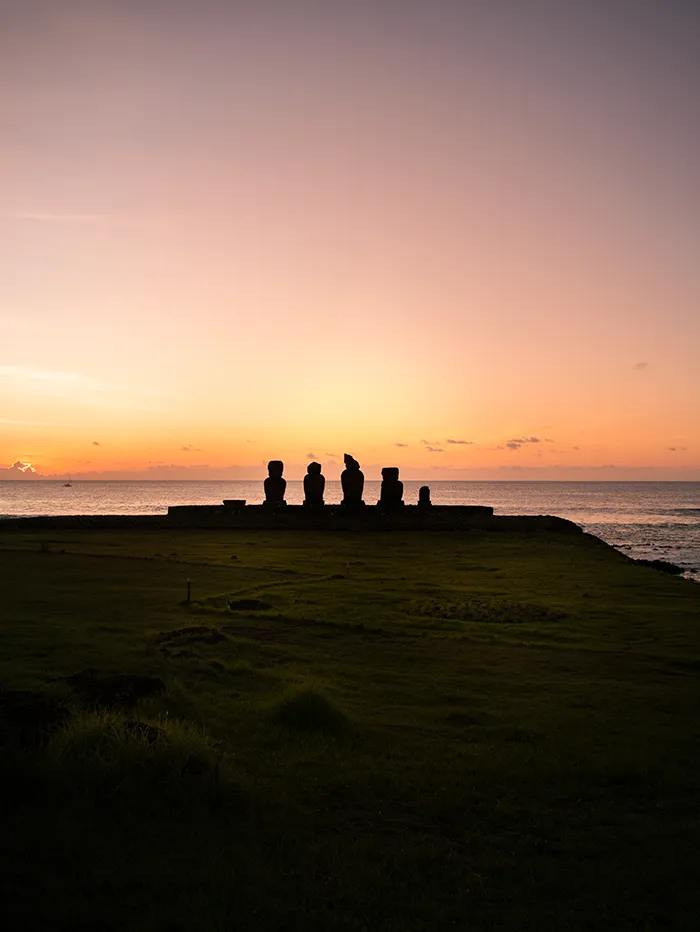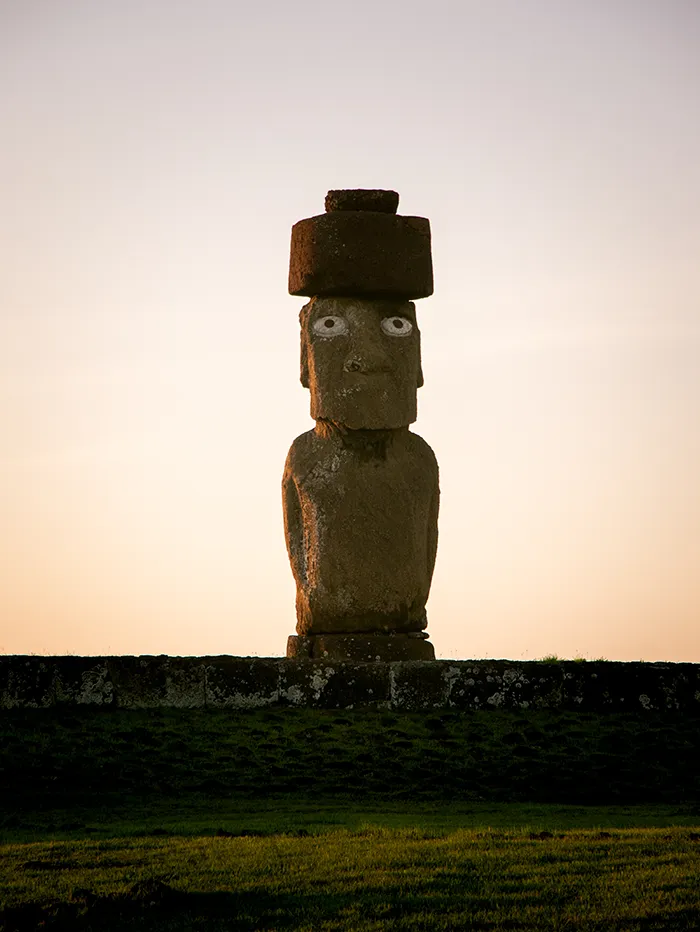You googled Easter Island, but on this blog, we call it by its real name: Rapa Nui.
This tiny island in the Pacific Ocean is one of the most isolated inhabited places on Earth!
Its colossal statues called Moai have captured the world’s imagination for centuries, and they’re probably why you’re planning this trip in the first place. But Rapa Nui has so much more to offer than its iconic statues, and we’re breaking it all down for you in this post.
Note: if this is your first time visiting, please check out our first-time visitors’ guide before reading this one as it will clear a lot of things up for you!
Top things to do in Rapa Nui
1. Visiting Moais (of course!)
Could not start this post any other way, right?! If you’ve already read our first-time visitors’ guide, you know by now that there are over 900 Moai statues on the island and that seeing most of them requires both a National Park ticket and either a guided tour or a private guide.
Haven’t read it yet? Read it here: How to visit Easter Island: a First-Time Traveler Guide to Rapa Nui
But after all, what are the Moais? Moai statues were created to honor and commemorate ancestors and were considered symbols of social status. The bigger the moai, the more prestige it brought to the family or lineage that commissioned it. In other words, these statues were the ultimate flex back in the day!
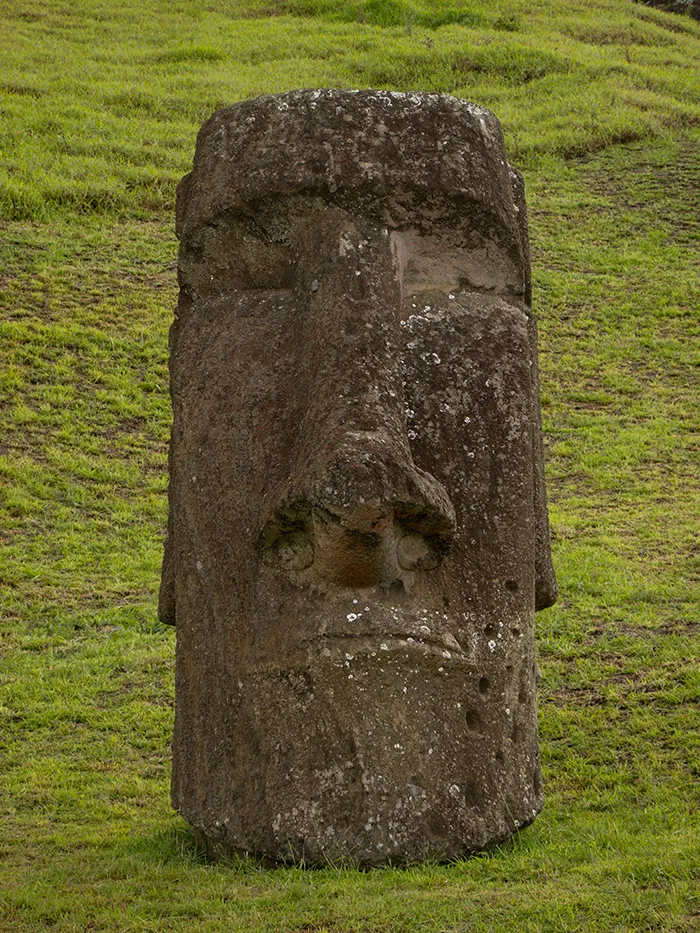
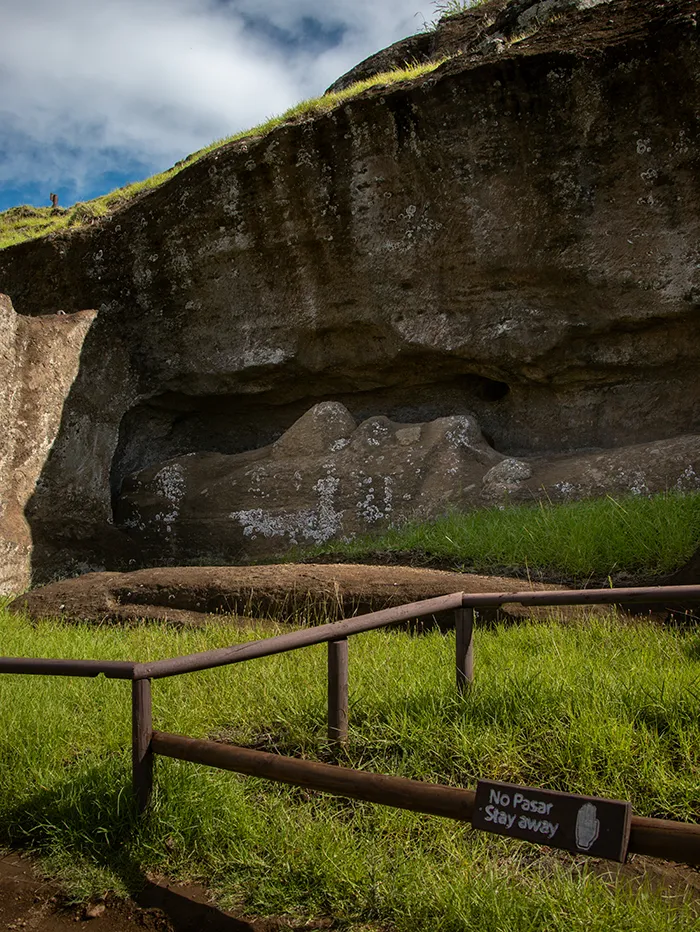
Here are some of the Moai sites you can’t skip:
1. Rano Raraku
The volcanic crater is where most of the statues were carved from. Imagine a giant, outdoor sculpture workshop where you can see statues in various stages of completion!
A few years ago, archaeologists excavated some of the Moais here and revealed that they were originally golden-colored, just like the volcanic rock.
Once their study was complete, the statues were reburied. Why? Surprisingly, leaving them buried is the best way to preserve their integrity (though we doubt the British Museum would agree).
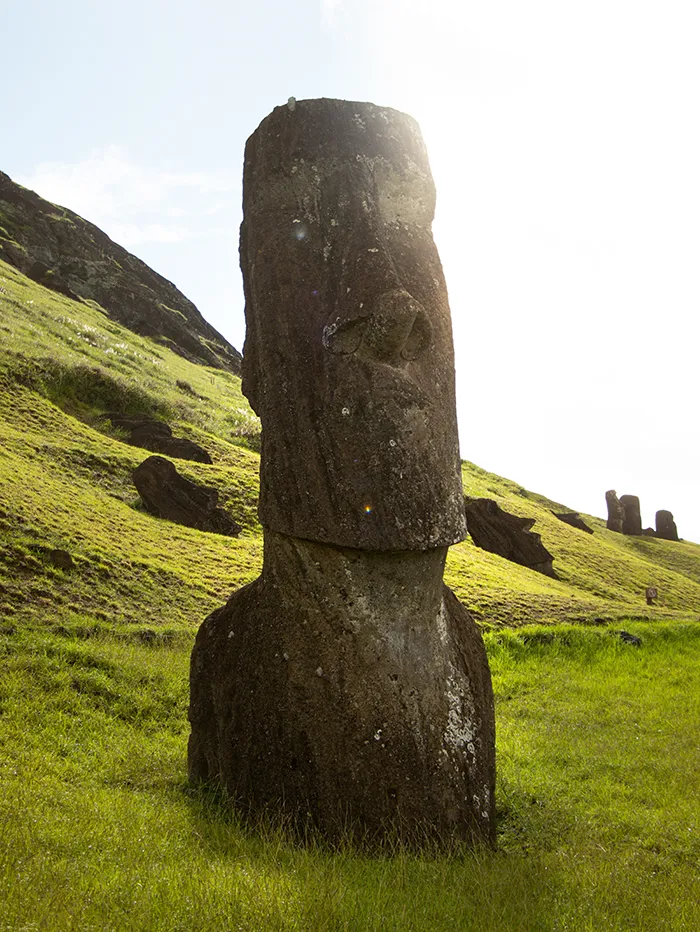
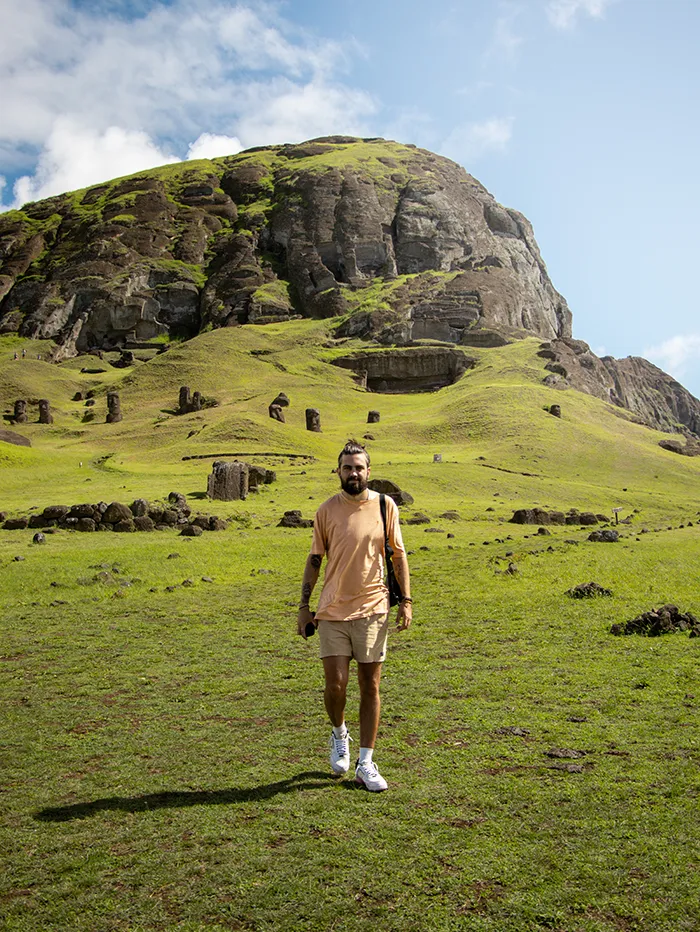
Fun fact: for years, how the Rapa Nui people moved the massive Moai from Rano Raraku to their final locations was a big mystery to archaeologists. But the Rapa Nui’s traditional songs passed down through generations revealed that the Moai “walked” to their destinations. And they weren’t entirely wrong! The statues were transported upright using ropes like this.
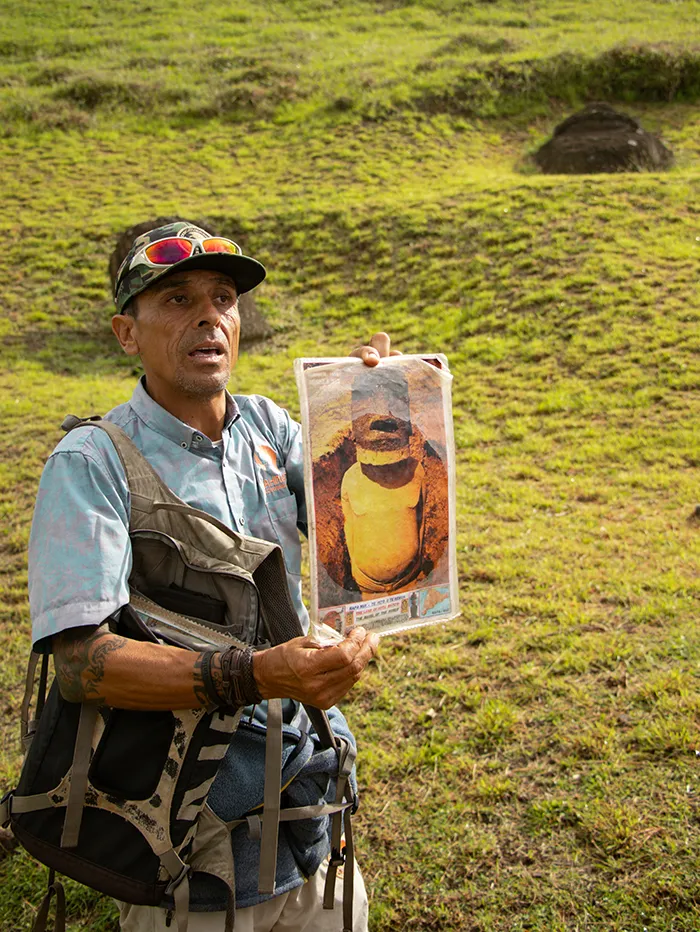
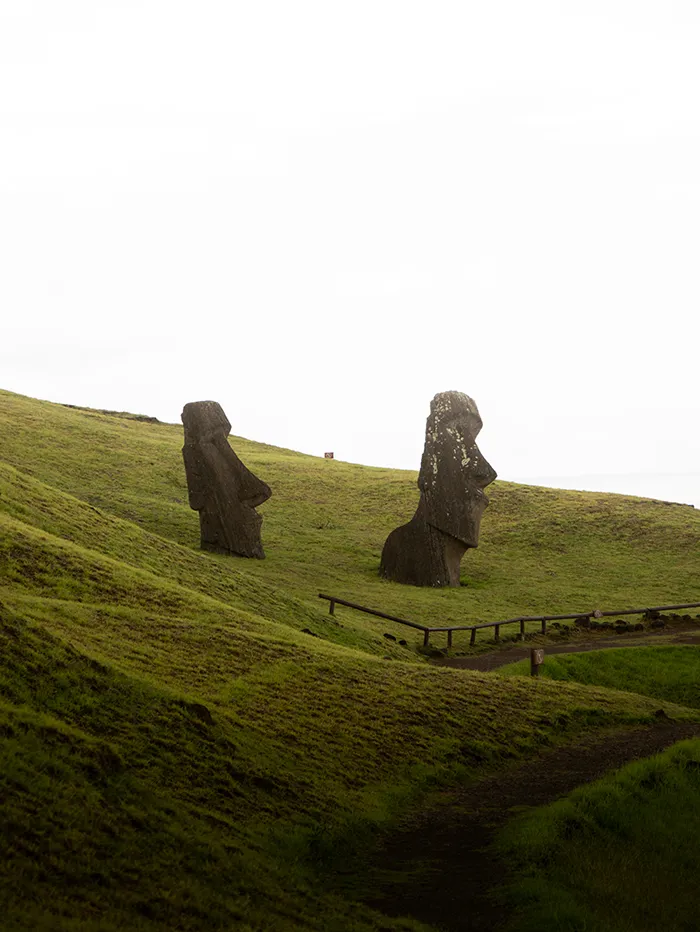
2. Ahu Tongariki
This is the largest ceremonial platform on the island, featuring 15 statues standing in a row. This very spot was hit by a tsunami in 1960 that destroyed the statues, which were only restored 30 years later.
Tip: this platform is perfectly aligned with the summer solstice, and we recommend visiting it during sunrise. You can watch it from outside the walls without a guide or inside with one.
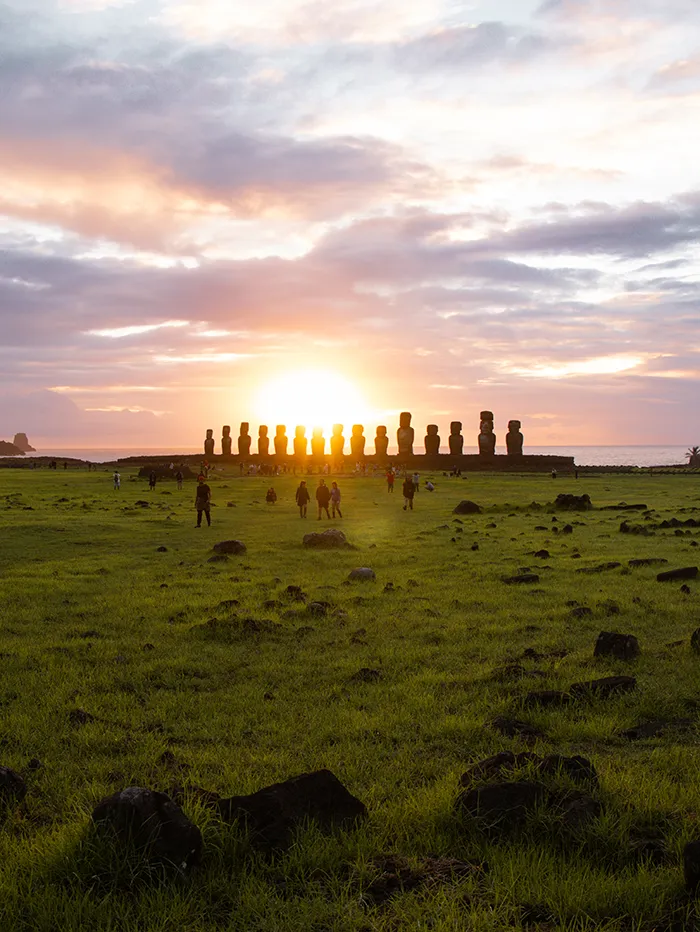
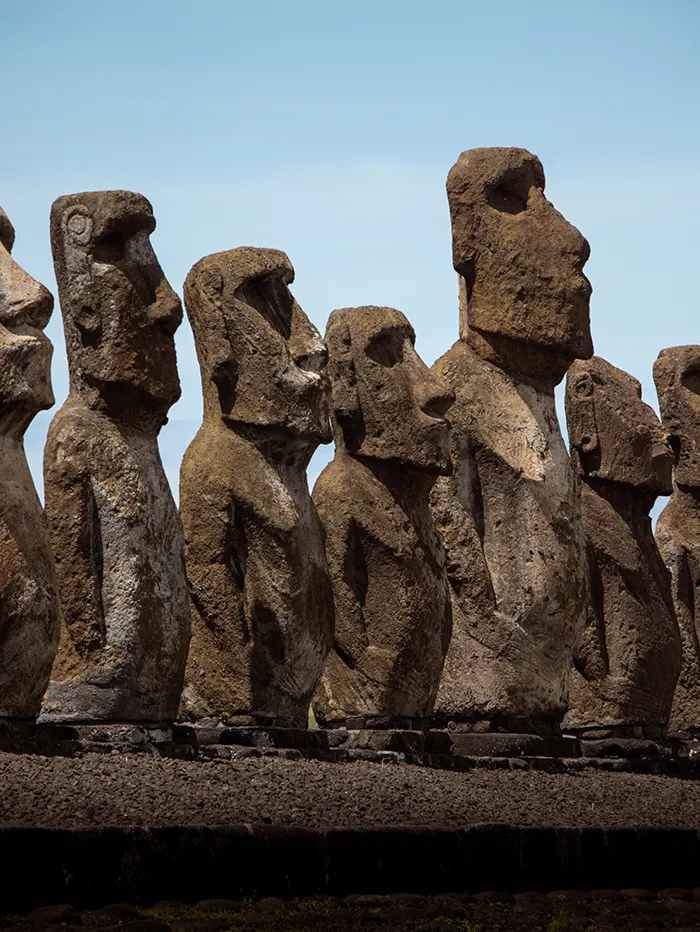
3. Ahu Te Pito Kura
Ahu Te Pito Kura is already an incredible spot, as it’s home to the largest Moai ever transported and erected on Rapa Nui. But what really sets it apart is the mysterious stone located nearby, often referred to as “Te Pito o Te Henua” or “The Navel of the World.”
This stone is believed to have been brought to the island by Hotu Matu’a, the island’s first king, and some even speculate that it could be a meteorite due to its magnetic properties and perfect round shape.
Fun fact: our tour guide also told us that at some point in time, the women in this village used to give birth sitting on this stone, guided by their grandmothers, and the umbilical cord was cut with obsidian.
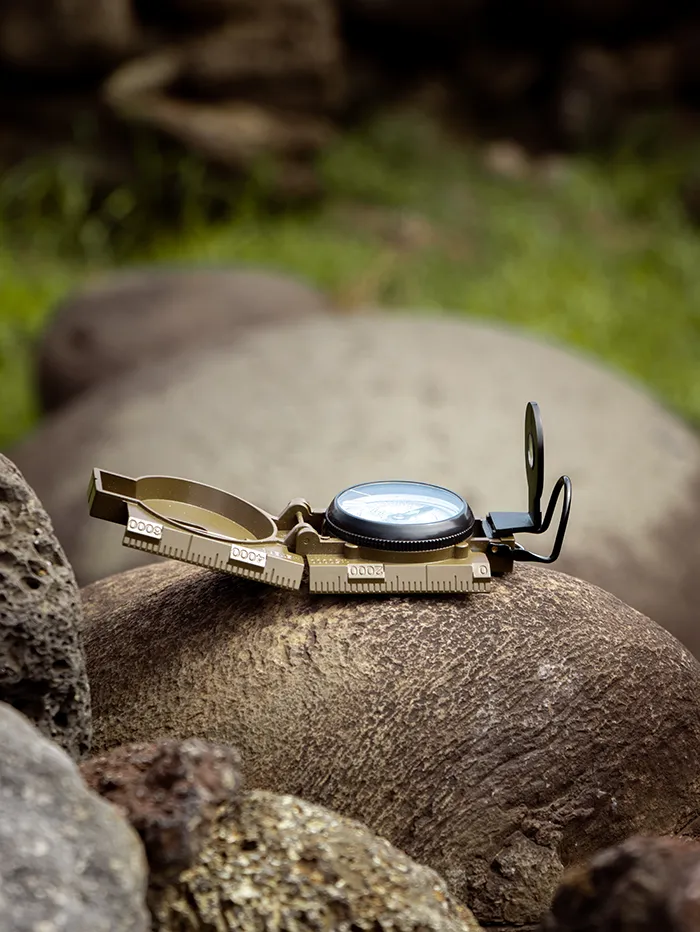

4. Ahu Vinapu
Ahu Vinapu is one of the most unique archaeological sites on Rapa Nui because of its incredible stonework. The precision of the stone walls here is often compared to Inca architecture, with large basalt slabs fitted so perfectly together that you can’t even slip a piece of paper between them. Also, this site is less touristy, so it’s perfect if you’re looking for a quieter spot to explore.
Fun fact: many of the Moai statues originally had eyes made from coral and volcanic rock. These eyes were designed to give the statues a lifelike appearance and were believed to imbue the Moai with spiritual power, watching over the islanders.
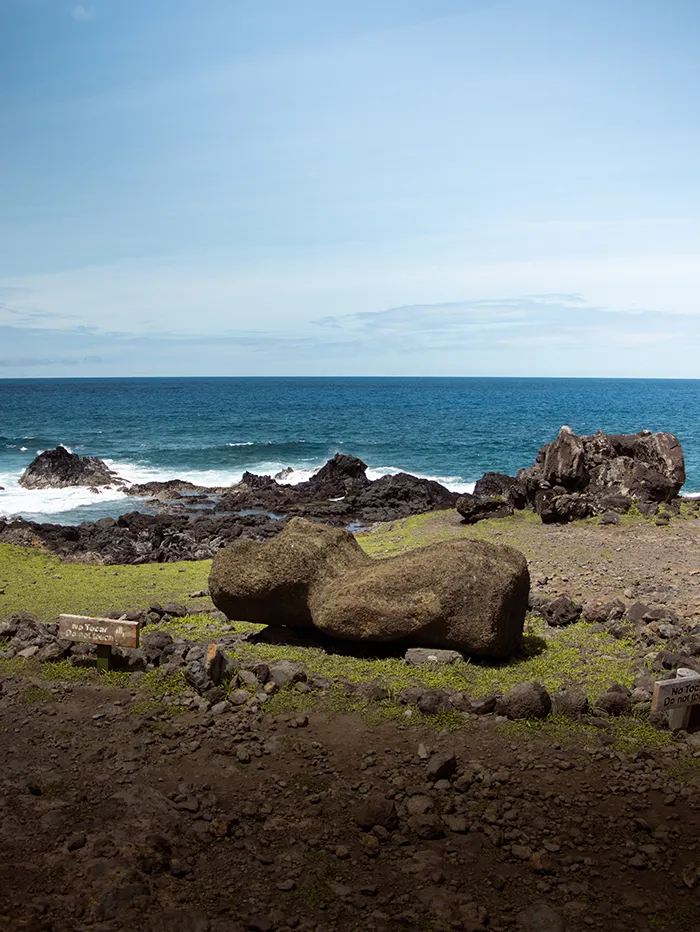
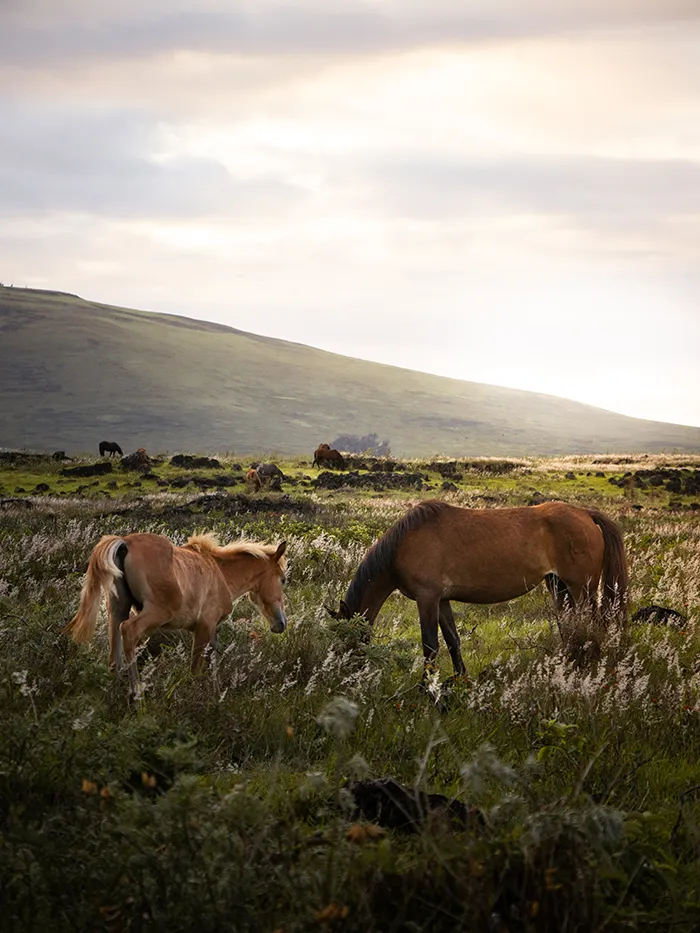
2. Visit Anakena, the Pink Beach
At Anakena Beach you can admire Moai statues for free and without a guide. Plus, it’s one of the few places on Earth with pinkish-hued sand!
It’s so beautiful royalty kept the entire northern part of the island secluded from commoners. And here’s a fun fact: it wasn’t just a geographical divide. Royals were distinguished by their extra-long ears, making it easy to tell who belonged where.
Fun fact: according to legend, this is where the first king, Hotu Matu’a, landed and established the island’s initial settlement.

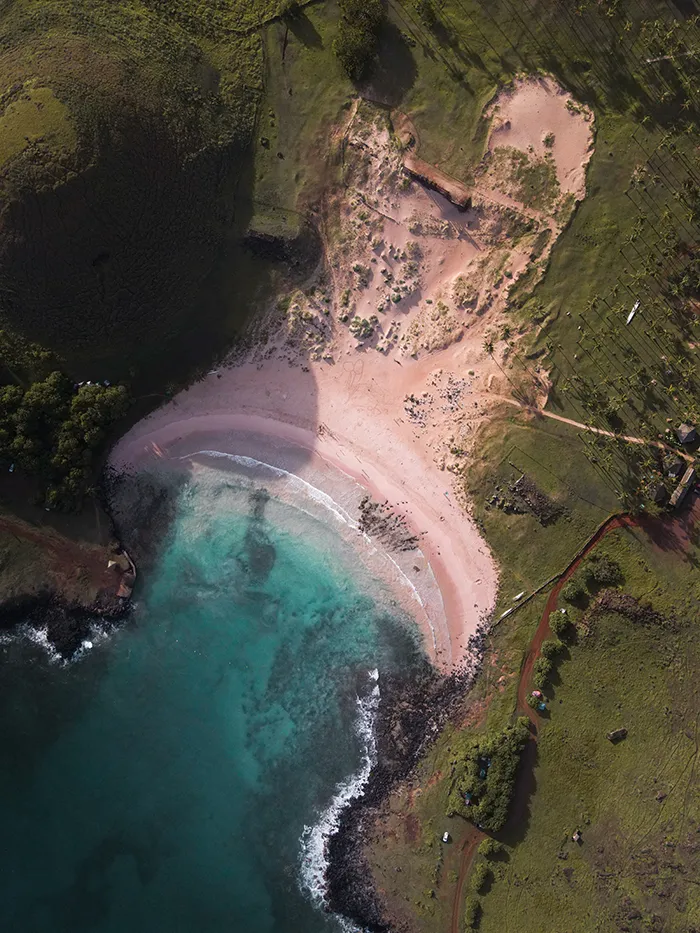
Anakena Beach is about a 45-minute drive from Hanga Roa, and here you can see the Ahu Nau Nau: Moai statues that still wear their red rock “crowns,” which represent hair and were carved from a red volcanic stone found on the island.
Tip: don’t miss out on getting yourself a mini pineapple on a stick at the beach’s entrance. It’s all part of the experience, and they’re delicious!
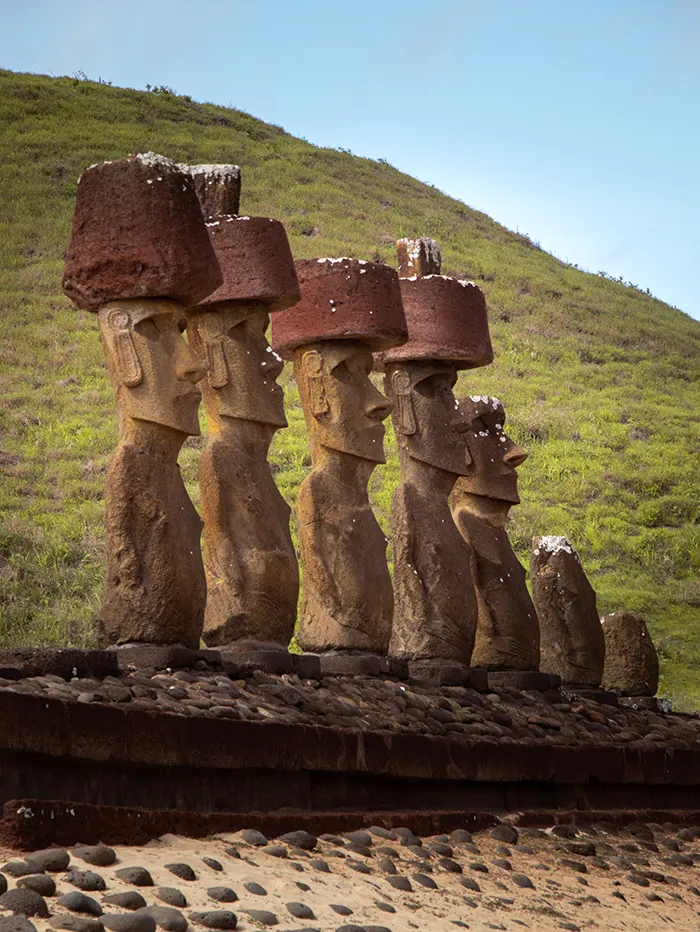
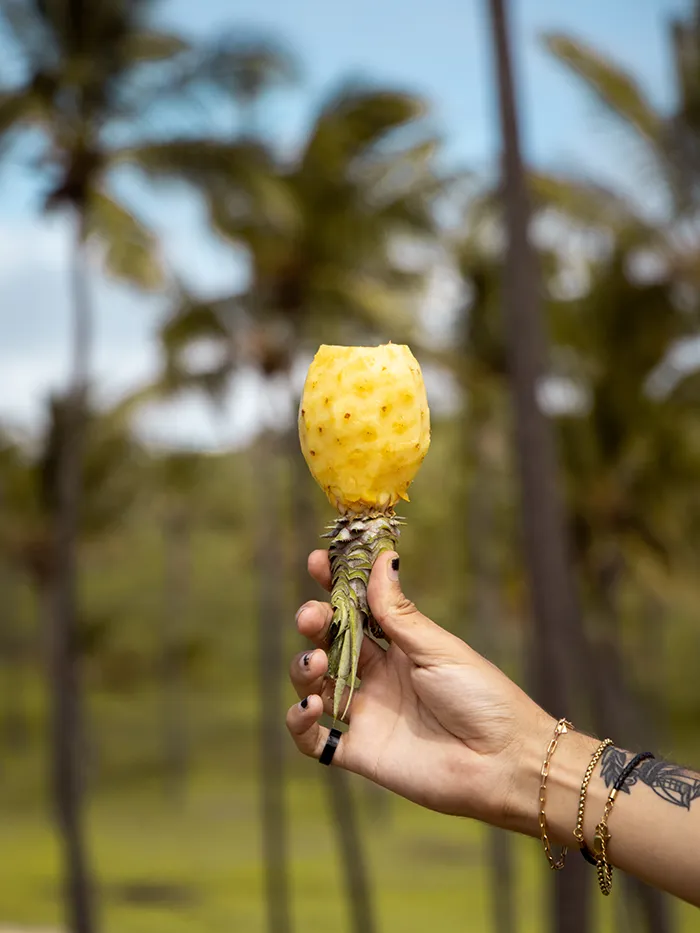
3. Explore the Caves
Remember how the royals kept the entire northern part of Rapa Nui (aka all the beaches) just for themselves? Well, they didn’t just stop at keeping commoners out… they’d actually kill anyone who dared to trespass on royal land. As you can imagine, this didn’t sit well with the locals and eventually led to civil unrest and war.
During this chaotic time, the royals had to find places to hide. The island’s caves were the natural shelters that became their refuge; and you can visit them all!
Fun fact: the first inhabitants, likely Polynesians, are believed to have arrived on the island ~1200 CE. They established a thriving society, developed the Moai statues, and cultivated the island’s natural resources.
Around the 1600s, deforestation and overuse of resources led to ecological challenges. Social structures shifted, civil war took place, and the focus moved from Moai construction to survival. Soon after, Europeans arrived in 1722.
Here are two of Rapa Nui’s caves you can’t miss:
1. Ana Te Pahu
Also known as “The Cave of the Caves”, Ana Te Pahu is an impressive network of lava tubes that once served as shelter and storage for the Rapa Nui people. It’s so extensive that it even supported small plantations, thanks to the humid environment and natural light streaming through openings.
One of its coolest features is a natural water reservoir, formed by rainwater seeping through the porous rock. This made it possible for people to stay here for long periods, turning this cave into a perfect refuge in times of need.
Tip: if you’re visiting this cave, make sure to also visit Ahu Akivi, the only Moai statues to face the ocean!
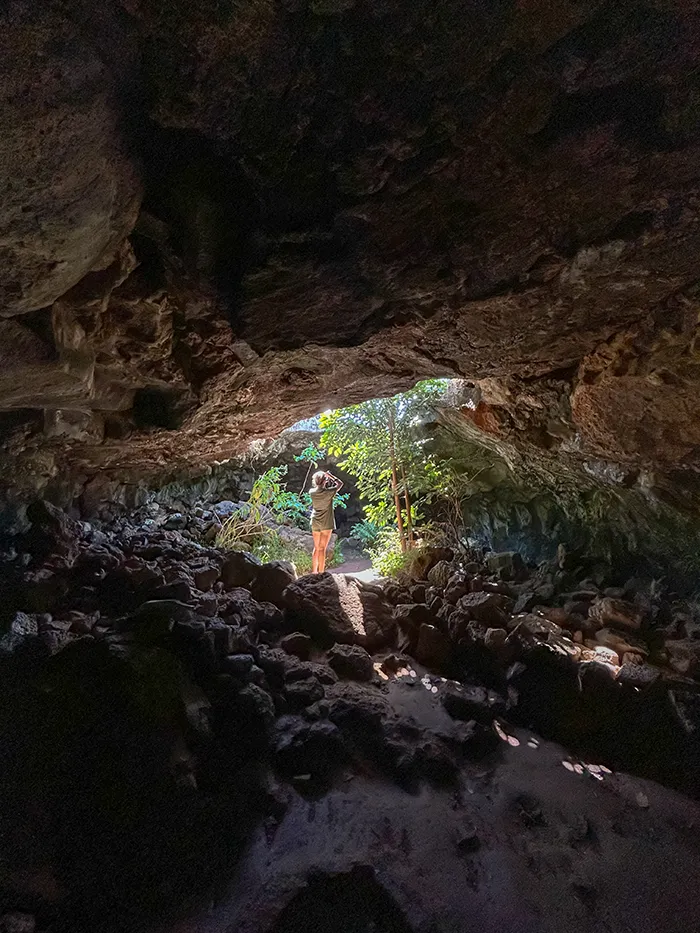
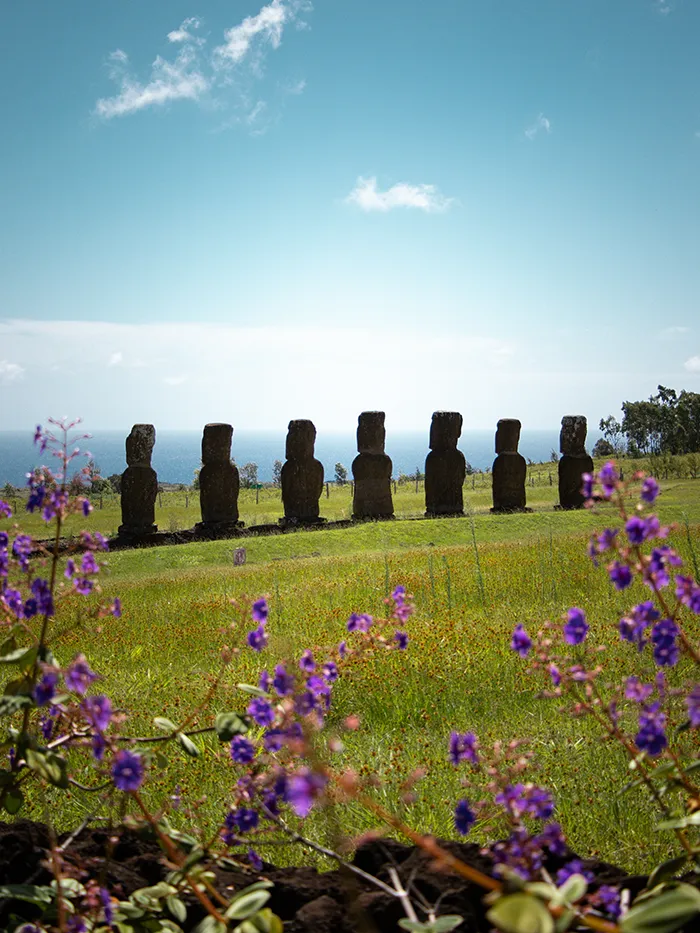
2. Ana Kakenga
One of the island’s most famous caves, Ana Kakenga is also known as the “The Cave of Two Windows” due to the two natural windows that frame the ocean.
4. Visit Ovahe, the Secret Beach
Unlike the popular Anakena Beach, Ovahe is a much quieter and secluded beach tucked away behind red volcanic rocks. It’s not a touristy spot, so chances are you’ll be all alone or alongside a few locals when visiting.
Ovahe holds cultural significance as it’s located near a sacred burial site. Please respect this area (and the island as a whole) by keeping noise levels low and ensuring no litter is left behind. Swimming is not recommended here unless the sea conditions are perfectly calm, due to the sharp volcanic rocks.
Note: While we love sharing lesser-known spots everywhere we go, we’re always mindful of preserving their charm. If you visit, please do so responsibly to help keep this special place pristine for future generations!
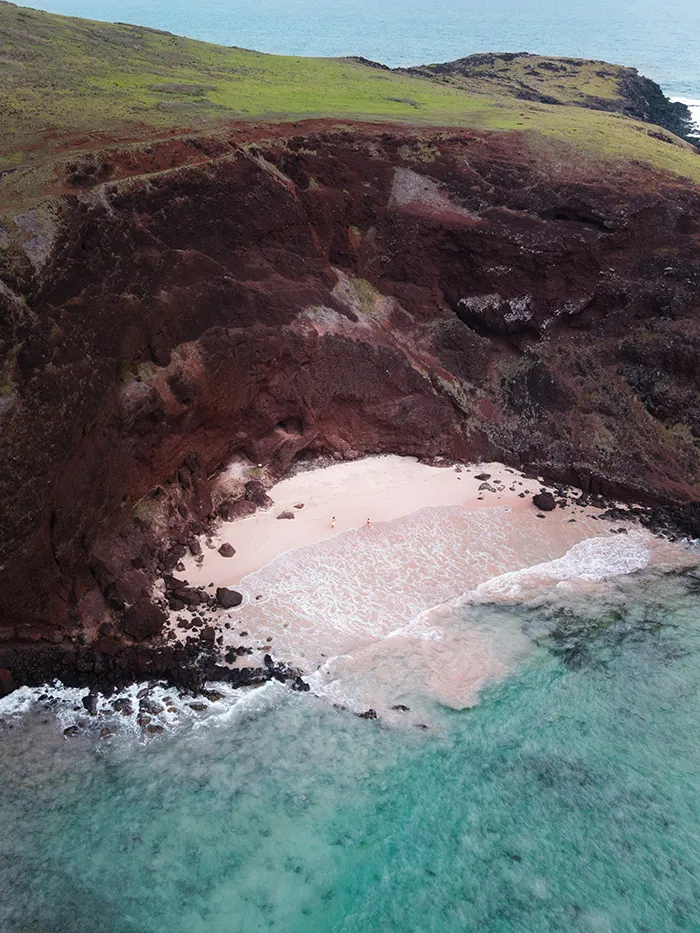
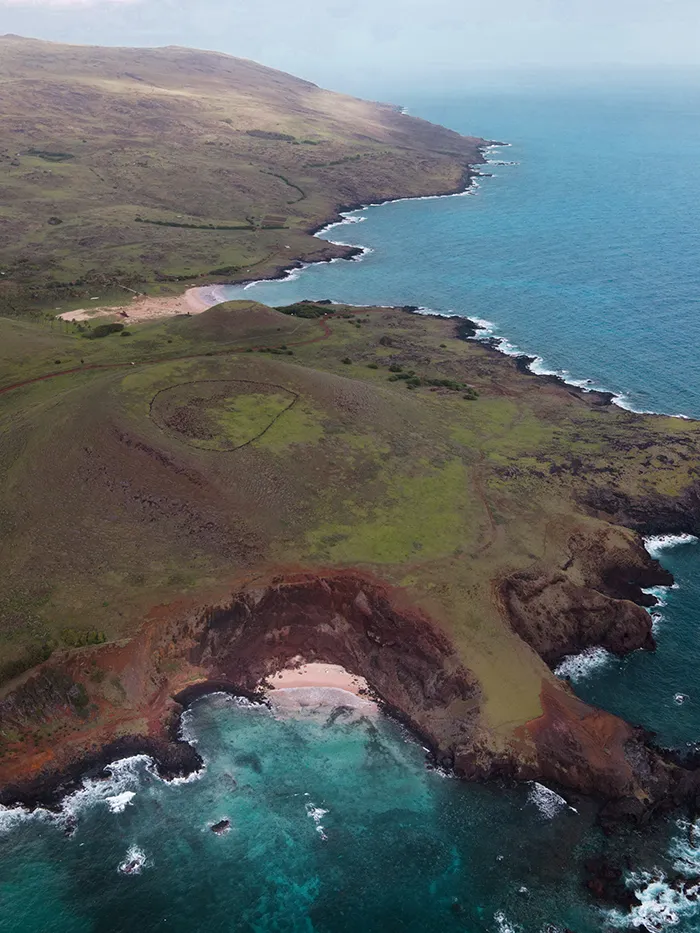
5. Scuba Dive to the Underwater Moai
Diving to the underwater Moai is one of the most iconic activities on Rapa Nui!
While the statue itself is a replica (it was created for a Kevin Costner movie), it’s still an incredible sight. Positioned in shallow waters near the marina, this Moai has become a tourist favorite, and even though we’re not honestly big fans of touristy traps, this one is worth the hype. Where else do you get to experience something like this?!
Plus, the remoteness of Rapa Nui means you’ll enjoy visibilities of up to 60 meters, offering a clear view of the healthy coral-covered lava flows below. While the marine life isn’t as abundant as in other regions, you might catch glimpses of sea turtles or a passing school of fish. Water temperatures are usually around the 20°C’s (very cold).
Important: Due to the wind’s unpredictability, dive days can be canceled, so it’s wise to plan with some flexibility. This specific dive is best suited for those with some experience, and a PADI Open Water certification is highly recommended. A dive here usually goes for around 200 EUR per person.
6. Learn all about the Birdman Cult
Rano Kao is more than just a huge volcano crater, it’s where one of the coolest cultural heritage sites on the island! Here, the Orongo Ceremonial Village tells the story of the Birdman Cult and its fascinating rituals.
Competitors would race, jump off cliffs, and swim hundreds of meters to retrieve an egg from an islet and become Bird-Man for the year (aka the island’s leader). It was not just a physical challenge but also a significant spiritual and political event.
It’s our favorite site on the island due to its history and a must-visit!
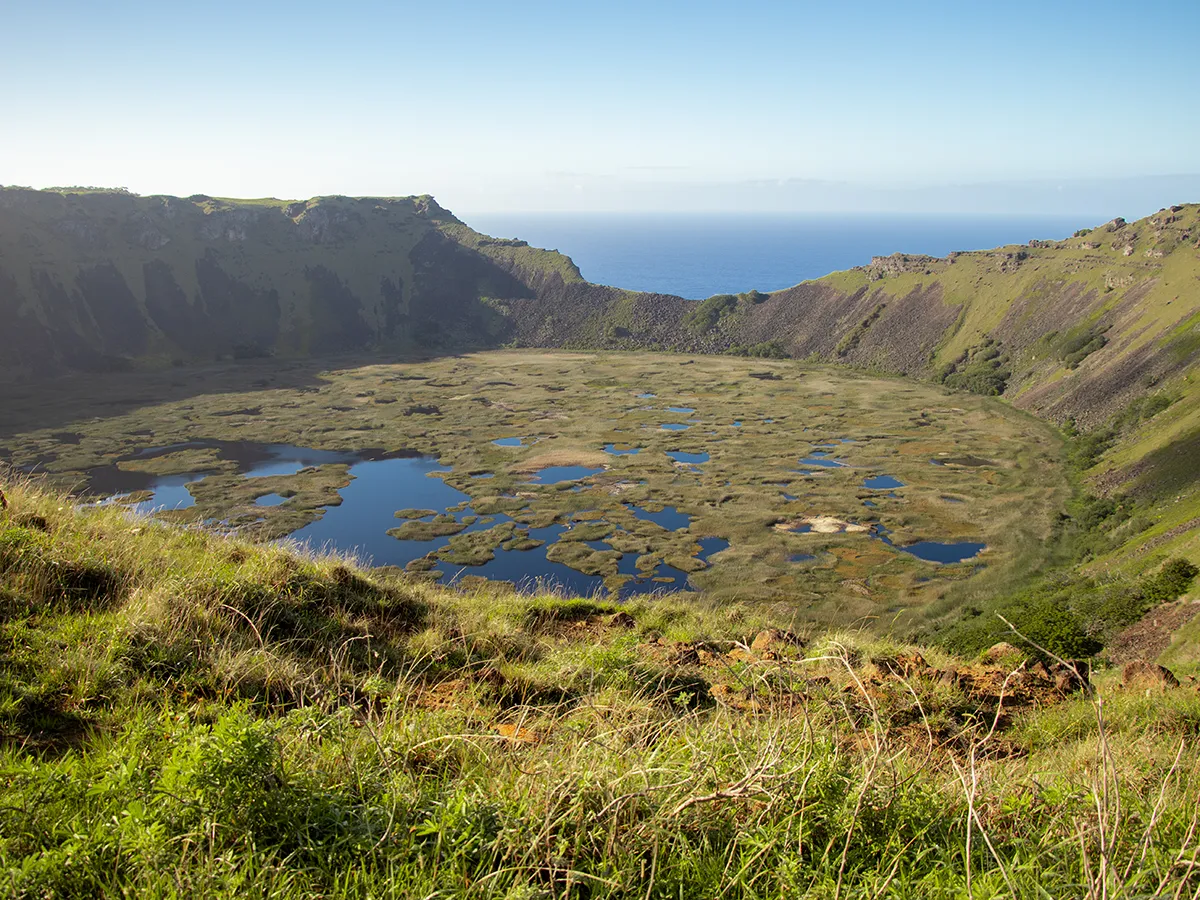
7. Horseback riding to the island’s highest point
Here’s one activity we’ll never forget: horseback riding to the top of Terevaka, the highest point on Easter Island (Rapa Nui) with @poeravacabalgatas.
The tour takes around 3 hours and takes you to the only place on the island where you can enjoy 360-degree panoramic views. Here, you become aware of just how remote Easter Island is from any other inhabited place on Earth.

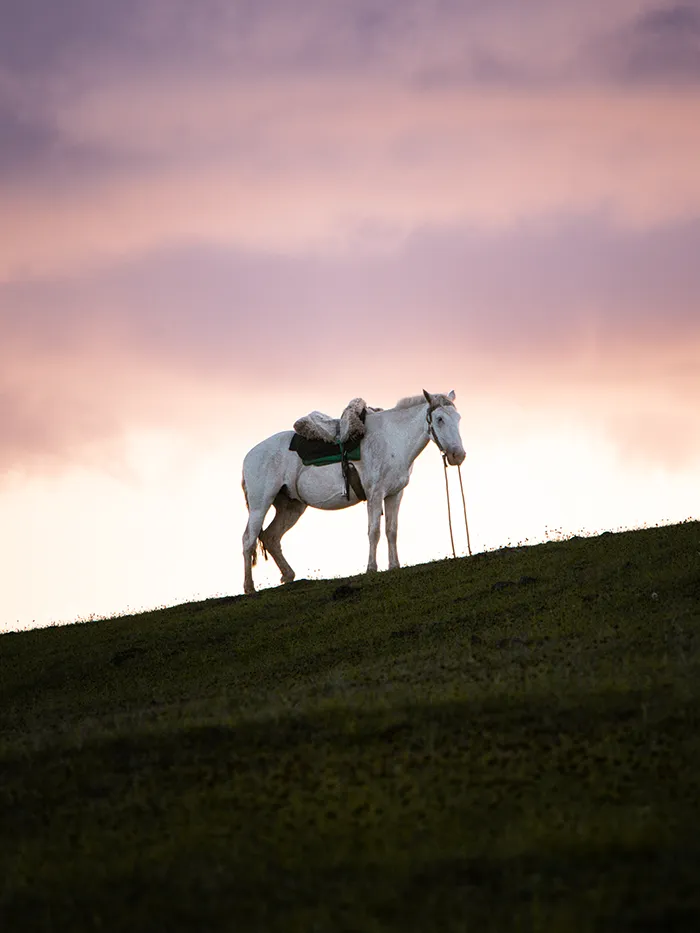
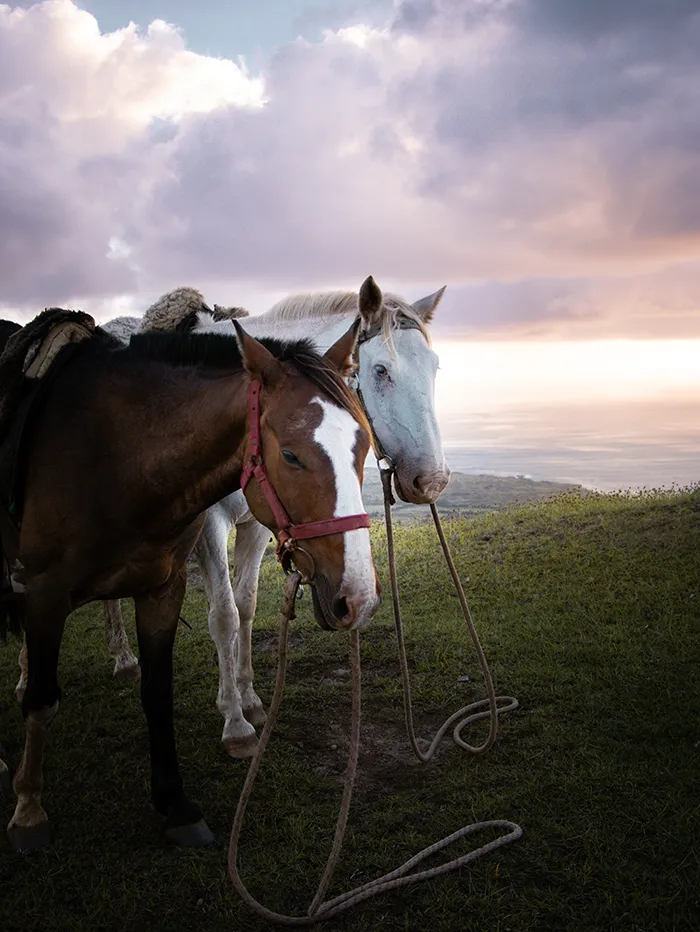
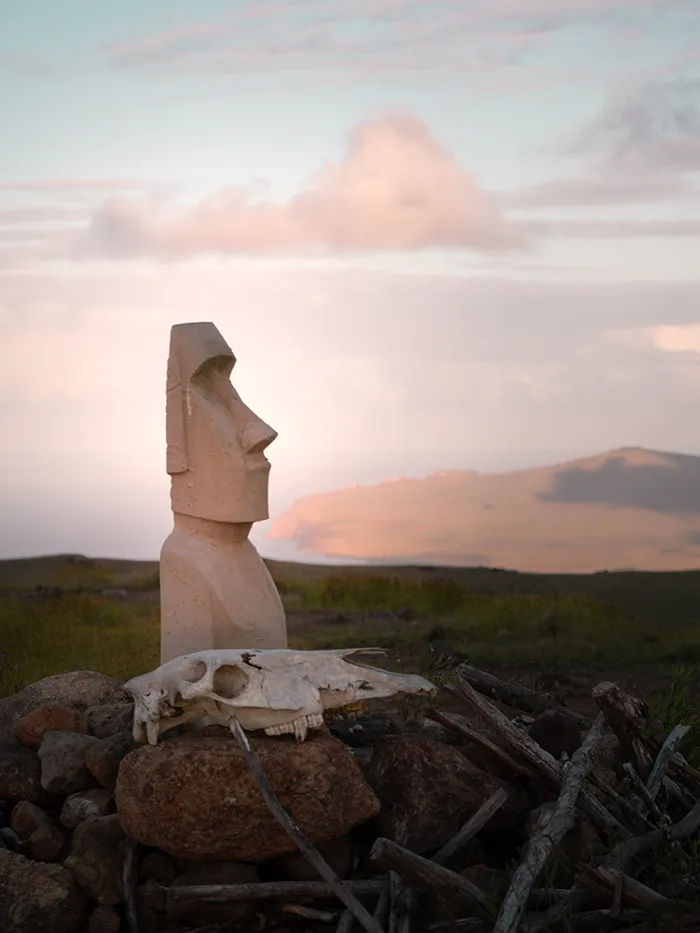
Hot tip: You can book this tour below. Opt for the one starting at 16:30 for the best sunset views!
8. Experience the Tapati Nui Festival
February brings the Tapati Nui Festival, a two-week celebration of Rapa Nui culture with music, dance, and traditional competitions. It turns the island into a lively carnival of colors and sounds and people all around the world travel here to experience it!
If you’re visiting around this time, you should note that booking your accommodations and festival tickets in advance is crucial. The island fills up quickly, and you don’t want to miss out on the fun!
Book your Rapa Nui accommodation here >
9. Swim and Snorkel at Motu Nui
Remember the Birdman Cult? Back in the day, they would swim to Moto Nui, one of the islets off Rapa Nui, as part of their annual challenge. Now, you can snorkel around this historic spot, along with the other islets: Motu Iti and Motu Kao-Kao.
Honestly, we weren’t expecting much, but we were blown away by how clear (and cold!) the water is. We even spotted Needlefish swimming near the rocky islets! While it’s not exactly a Thailand-level snorkeling experience, it’s still absolutely worth it for the unique setting.
Fun fact: Our amazing guide shared so many stories from his younger days growing up here. His first date with his wife was on Moto Nui. How special is that?! We heard Rapa Nui people are reserved but this was not our experience. They’re some of the most amazing folks we’ve ever met!
We did our tour with Make Make (location here), and highly recommend them. In February 2024, the cost for the snorkeling tour was around 35 euros per person. In case you want to book snorkeling tours (or any other tours) in advance, we recommend GetYourGuide!
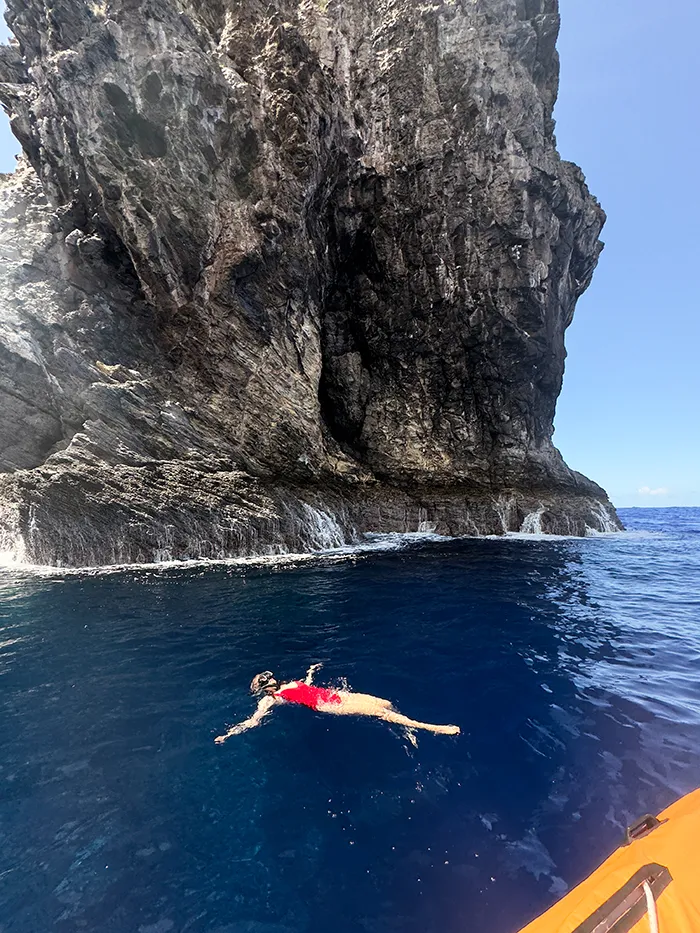
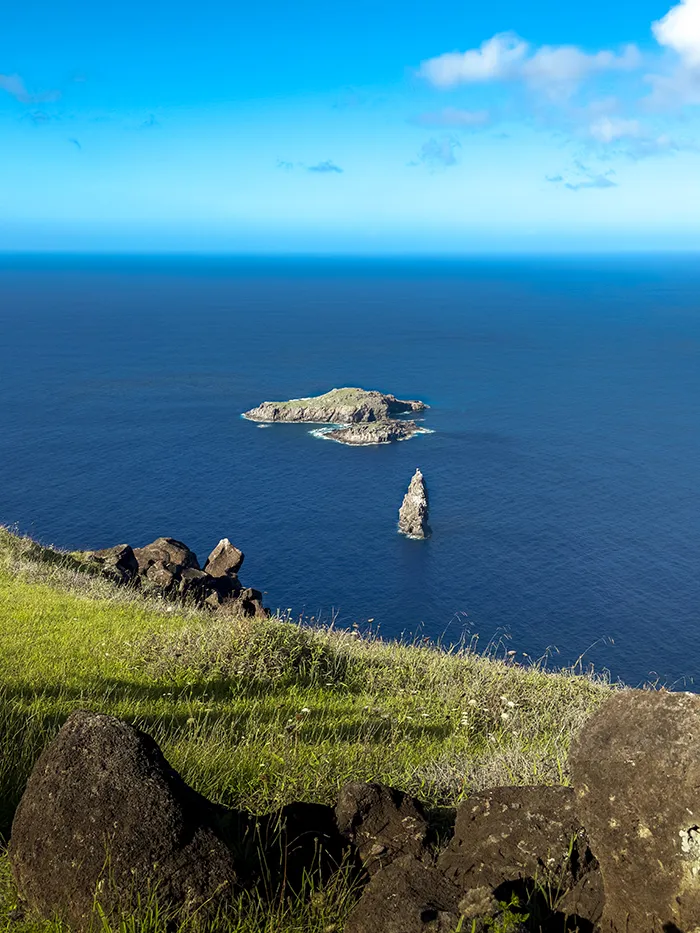
10. Stroll Through Hanga Roa
The town of Hanga Roa, near the airport, is the island’s hub. This is where you’ll find most hotels, restaurants, and amenities. It’s essentially the heart of island life, and despite being quite small, it’s filled with nice things to do!
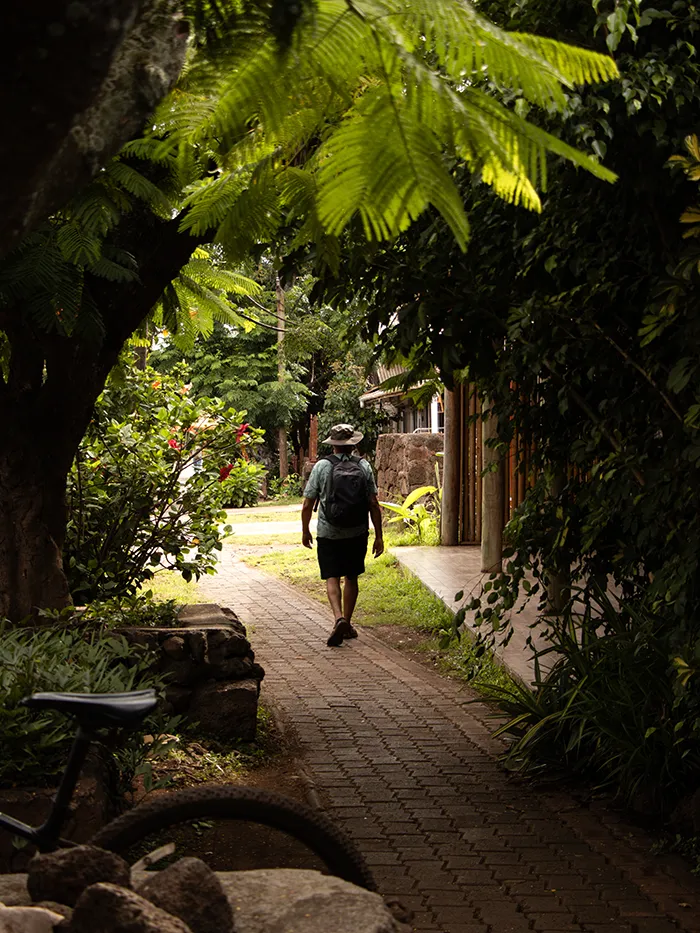
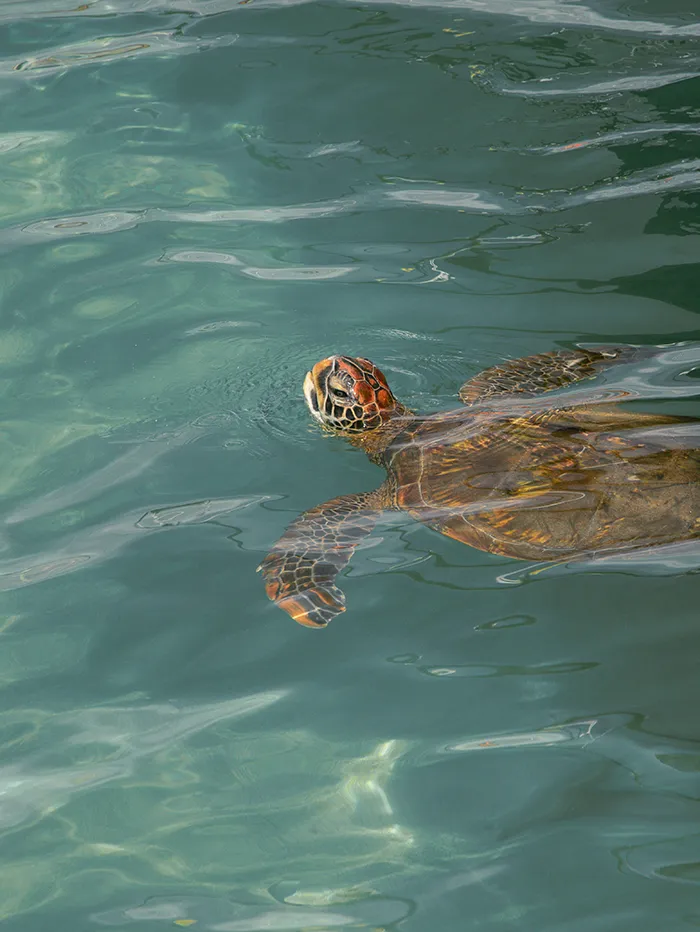
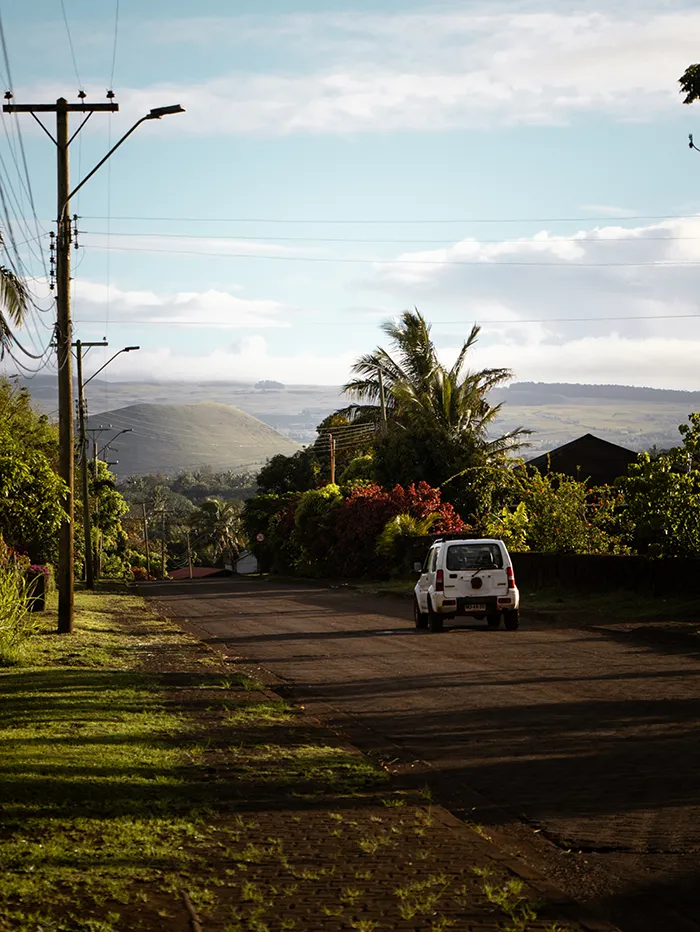
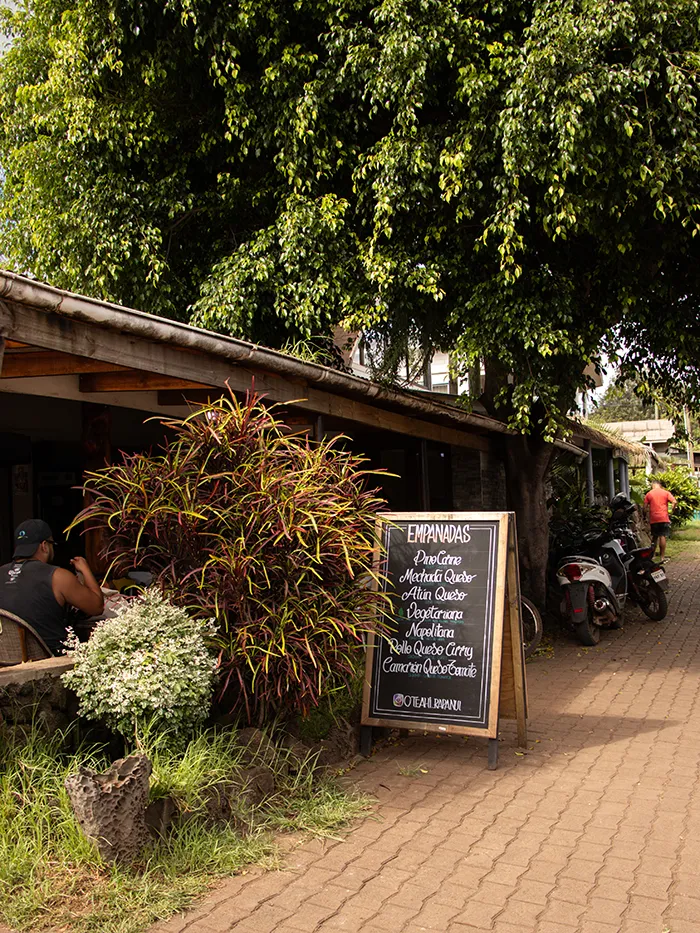
Don’t miss the Avenida Atamu Tekena, the town’s main street, and Mercado Artesanal for local crafts and souvenirs.
Spot huge turtles at Caleta Hanga Roa and take the Policarpo Toro street for a coastal walk. Here you’ll find a small palm-tree-lined beach named Playa Poko Poko, and Ahu Ko Te Riku, the best sunset spot in town!
